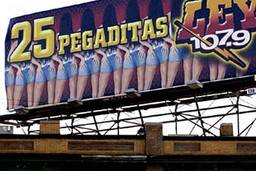Smackdown 2004!, the first national convention of the League of Independent Voters held mid-July in Columbus, Ohio, was a bootleg operation run entirely on cell phones, coffee and bad cafeteria food. The shuttle to and from the airport was a guy named Jeff in a Jeep. More than 300 people attended, so the overflow attendees were housed in a dormitory that reeked of fresh paint.
It worked brilliantly.
For a change, this was a progressive convention that started out with a plan. Unlike previous youth voter initiatives, the League is not looking to “appeal” to young voters — it is young voters who are mobilizing their own peers on their own terms. On hand were scores of activists who have accomplished electoral organizing with documented success and could entertain questions about organizational identity and post-election planning with flair. The League of Independent Voters is creating a youth voter bloc by tapping the power of existing feelings of disenfranchisement and frustration and showing activists routes into the political realm. It is instructing young activists in the old-fashioned tools of the campaign trade, combined with a Web-savvy sensibility and a concert-hopping, outside-the-club-registering twist.
Founded by William Upski Wimsatt, Kyle Stewart, Laura Livoti, James Bernard and Adrienne Maree Brown, the League published How To Get Stupid White Men Out of Office (see “Will Your State Be the Florida of 2004?,” July 5). The group also has offered grants to activists looking to get election-related projects off the ground. For their part, attendees arrived at the convention armed with ideas and ongoing projects. They included Sharif Corinaldi, who founded the Swing State Spring/Summer Break project that is placing student activists in key swing states on their school breaks, and Bike for Democracy — a nonpartisan group hoping to raise awareness during a cross-country, election-timed bicycle trip.
The convention was structured around the “90-day plan” — a concrete how-to of election-related organizing, complete with timeline, calendar and resource lists that every activist could take home and put into action. This was an inspired move — so many progressive forums are all ideas and case histories, and if you’re really lucky, someone’s handwritten notes on next steps. Organizers urged participants to retrofit the plan to fit their communities and local campaigns.
A team of crack programmers from San Francisco presented a soon-to-debut version of indyvoter.com. This open-source, network-building Web site (à la Friendster) will allow convention attendees and activists to continue the exchange — launching a “local” that moves beyond geography.
In workshops that ran for the rest of the weekend, the League continued providing advice and tools activists could put to use. An hour-long session on fundraising had us writing budgets. “Tax Exempt Voter Organizing” was a headlong dive into the legalese of tax classifications. The “Media and Self-Documentation” session frankly addressed the complicated feelings of distrust many young activists have toward the media, but did so with such free-for-all humor that the girl next to me turned and said, “This is like stand-up comedy for lefties.”
The convention also smartly took up two questions that have bedeviled organizing: coalition building and burnout. The coalition-building session was led by seasoned activists who reminded us not just of the pitfalls, but of the strengths of a good coalition. And burnout came up in multiple sessions — we were warned that constantly burning the candle at both ends would leave us frustrated, unhappy and ineffective.
This is not to say that the convention went perfectly. Some sessions were disappointing, never taking off from the “What are your questions?” phase. One activist from southern Oregon expressed disappointment in the urban focus of both the 90-day plan and many of the campaign strategies. Others were left unsettled that conversations about race and gender within the League were never fully discussed or resolved.
But the strength of the League was embodied in the last session. Adrienne Maree Brown, a witty, grounded activist from Brooklyn and the emcee for most of the convention, led a discussion concerning post-election plans and the future of the League. This is the part of the convention to get excited about — young people talking about organizing beyond one election, taking up issues like discriminatory sentencing, healthcare and gay marriage. This final conversation considered the shelf life of political organizations, and the commitment needed to create a voting bloc of young voters that will continue to effect change.
The activists who attended this convention will not simply start their own chapters of the League. They will establish all types of projects, end up on boards, pop up on campaigns, and continue fighting the good fight.
Because when we left, it wasn’t just with the exhausted haze of a long weekend; it was with the giddy joy of people embarking on victory.







